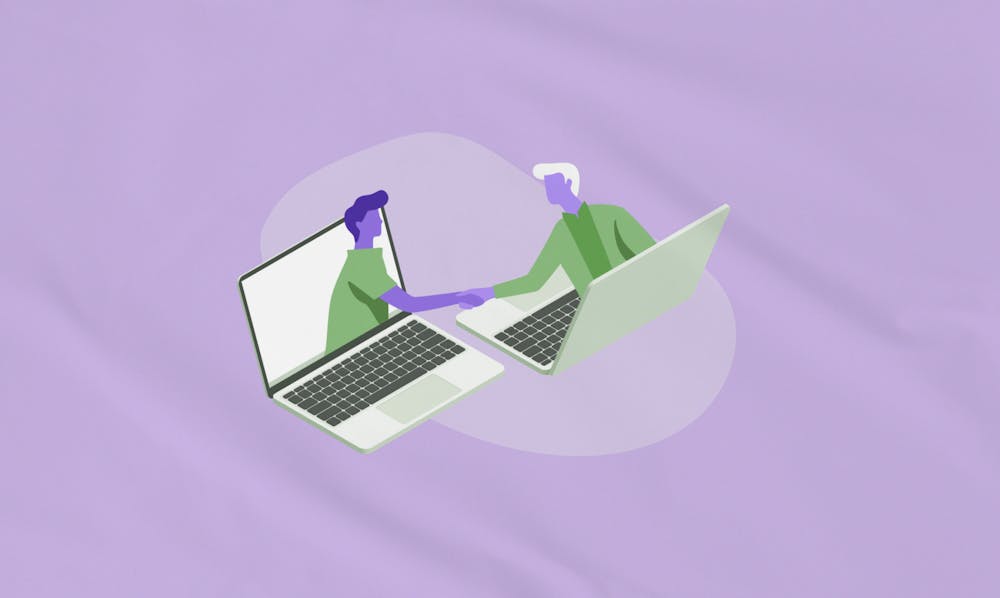
Without in-person office hours and programs like "Take Your Professor to Lunch," professors are turning to new platforms to connect with students beyond the classroom and academic setting.
Before the COVID-19 pandemic, Senior Lecturer and Director of Microeconomic Principles program Anne Duchene had lunch with an average of three different students from her ECON 001: Intro to Microeconomics class every week through the “Take Your Professor to Lunch” program. The program, which allowed students and faculty to get to know each other outside the classroom over a free lunch at one of Penn's dining facilities, has been put on hold due to the pandemic and is expected to return in fall 2021.
“When you teach a large class, there are not many [student-teacher] interactions during class, so this program was very nice, because I was getting to know my students, compared to when we interact in the classroom," Duchene said.
To make up for the loss of in-person services like “Take Your Professor to Lunch,” professors like Duchene have shifted to platforms like Slate, Slack, and Gather Town. Professors cite difficulties engaging with students through Canvas — the course management website standard across all classes, calling its communication venues "limited" for instructors and students.
Duchene, who is teaching a total of 600 students in ECON 001 this semester, is using messaging platform Slate to try to bridge the gap between herself and the students. The password-protected Slate group for ECON 001 students consists of different channels for students to ask questions pertaining to homework and exams and off-topic conversations like food and movie recommendations. Students can also create their own private channels to form study groups.
“[The students] can interact with me or with the TAs, and they can talk about anything,” Duchene said. “They talk about their lives. They talk about the movies they like. I never got that with Canvas discussions.”

College first year Rohan Singh said while Slate does allow students to easily communicate with the professor and each other, the participation in the various Slate channels can feel forced due to the participation grade which requires students to post weekly in any channel. He said discussion is livelier in the ECON 001 GroupMe, a student-run group chat in the GroupMe app with over 367 members.
College first year Johnathan Hargest praised Slate, adding that it is easier to use than Canvas.
For PSCI 107: Intro to Data Science instructor Marc Trussler, communication through Canvas is unreliable, as many messages end up in students' email junk folders and do not allow for much back-and-forth communication. He added that the Canvas discussion boards did not facilitate discussion beyond the required participation.
“I felt [in the spring] that I really wasn't doing enough to stay connected with the students, and that the students really lost track of each other,” Trussler said.
Trussler is now using Slack, a messaging platform widely used among various student organizations at Penn, to centralize communication between himself, PSCI 107 co-instructor Stephen Pettigrew, one TA, and his 45 students.
Like Slate, users on Slack can be divided into different channels. Slack channels for PSCI 107 include class announcements, study groups, questions related to the programming language R, and off-topic channels like one for telling jokes to lighten the mood during the challenging remote semester. Slack's features also include phone and video calling between users.
“[The professors and TA] felt Slack was the easiest way to have really easy, immediate, and non-formal communication between us and the students and between the students," he said.
Director of the Creative Writing Program Julia Bloch will also use Slack for College of Liberal and Professional Studies course CRWR 240: The Art of Editing, which started in late October. Bloch said she intends to create a channel to discuss the case studies she will present in class, a channel to present and critique writing assignments, and an off-topic channel where students can discuss anything unrelated to the class. She will also have a Slack channel for office hours where students can “walk in” to the channel, ask her any questions related or unrelated to class material, and request a phone or video call through Slack.
“Canvas is quite limited in terms of communication, and Slack offers that more off-the-cuff, improvisatory, lower-stakes method of communication,” Bloch said. “I knew that I would enjoy having more availability for my students than what Canvas offers.”
Wharton and College first year Tracy Zhang said she is disappointed that she has not been able to take advantage of the "Take Your Professor To Lunch" program but is thankful that professors have offered other opportunities to meet with them outside class.
She praised the use of Gather Town, a simulation of buildings and classrooms on campus where students, professors, and teaching assistants can interact with one another through personal avatars during office hours, in CIS 120: Programming Languages and Techniques.
“I think if other classes or departments could implement something similar [to Gather Town], it might improve the student experience [interacting with the professor]," Zhang said.
Even when classes return to in-person operations, Bloch said she will likely continue using Slack as a means to improve communication and connect with students.
“Teaching remotely has given me a deeper appreciation for how tools can increase connectivity between me and my students, so I don’t just see it as a stop-gap measure,” she said.
The Daily Pennsylvanian is an independent, student-run newspaper. Please consider making a donation to support the coverage that shapes the University. Your generosity ensures a future of strong journalism at Penn.
Donate



